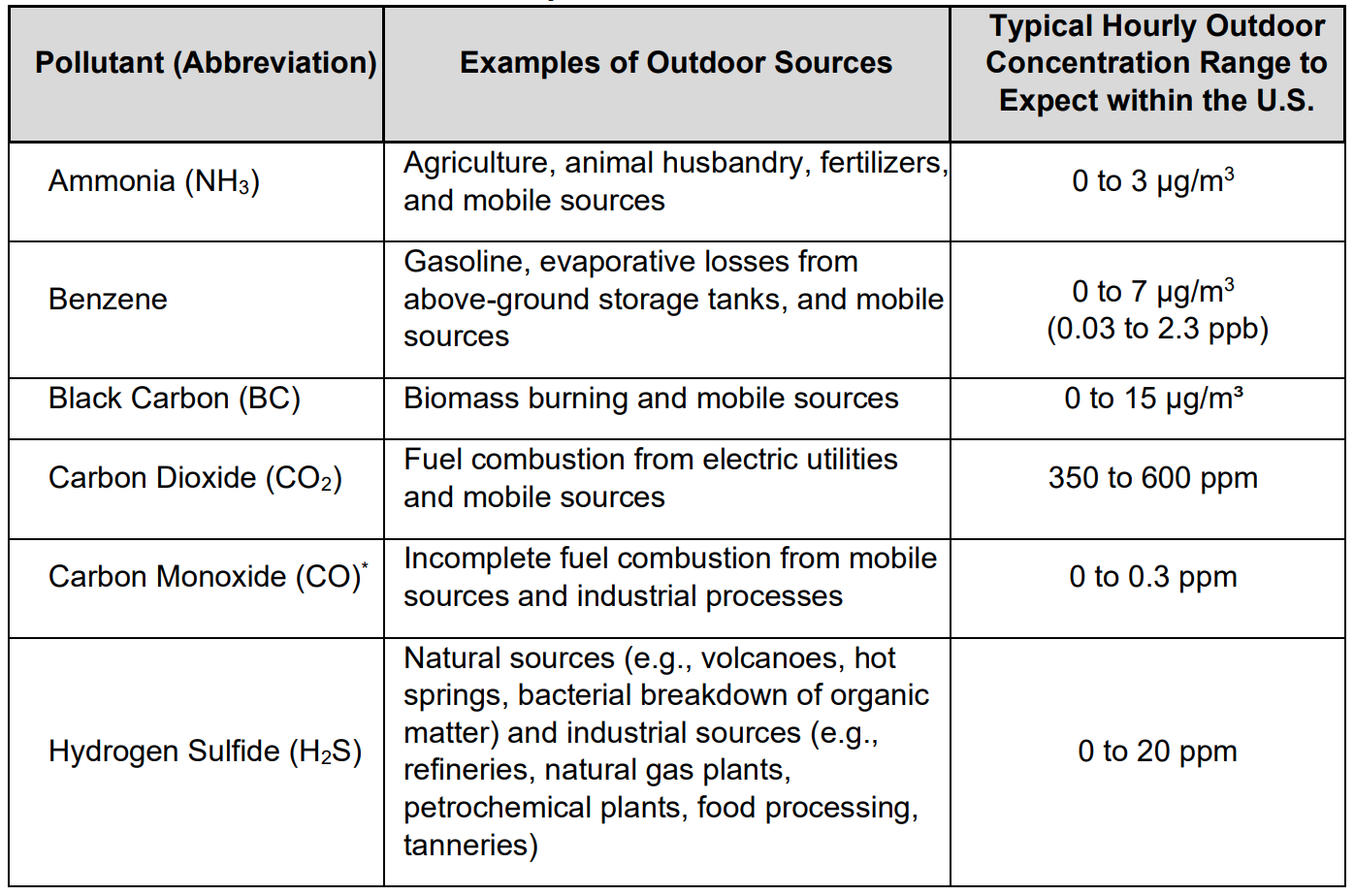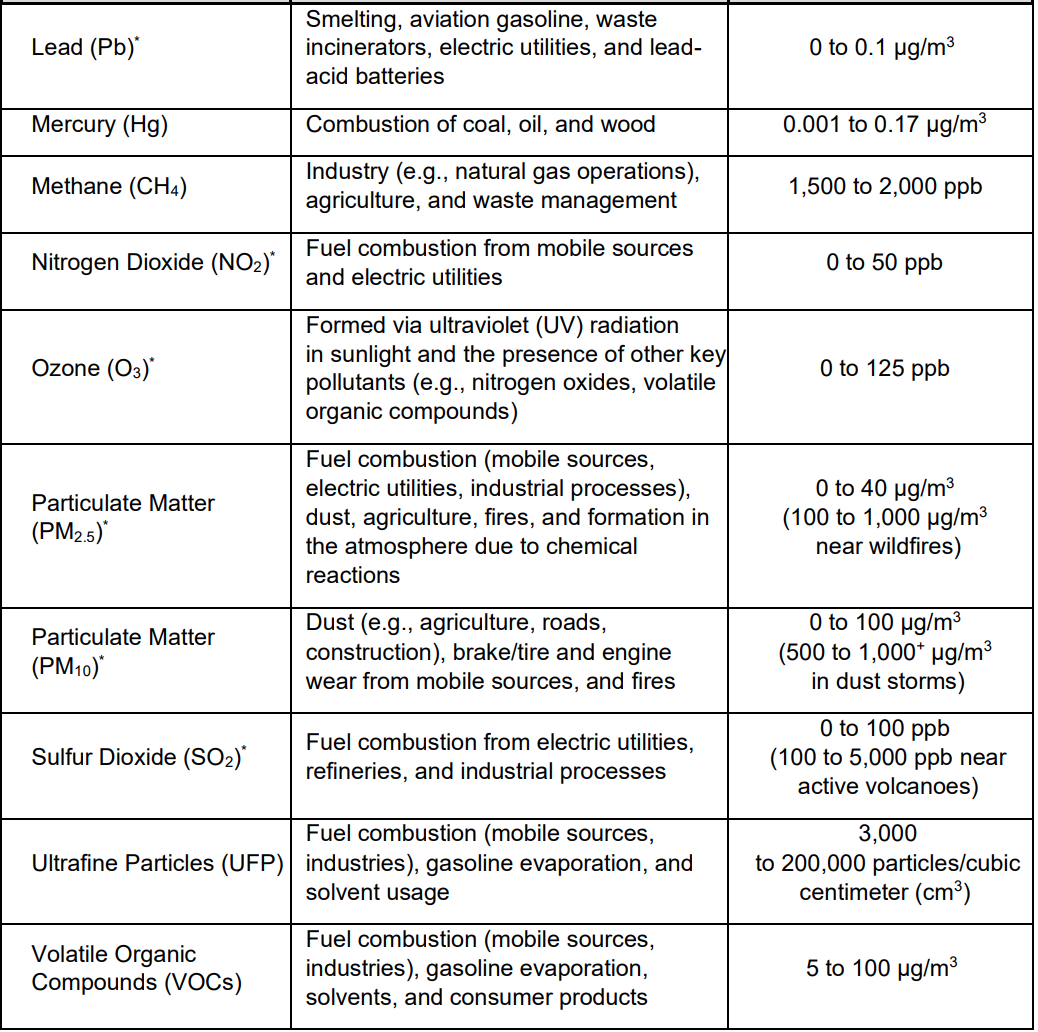TL;DR — By determining the environmental questions that will drive the purpose of a low-cost air quality monitoring network, you can establish an effective, goal-oriented network design. The US EPA’s recently updated Air Sensor Guidebook lends guidance to the considerations to take regarding existing air pollution in an area, the goals of the monitoring network, and the existing monitoring infrastructure in place to help determine how a low-cost sensor network can be most effectively employed to achieve the project’s unique goals.
The US EPA Enhanced Air Sensor Guidebook
The US EPA published an updated Air Sensor Guidebook in 2022 that includes valuable information on air quality sensor performance guidance, determining the purpose for monitoring, and planning and conducting an air quality monitoring study. This update of the original 2014 version reflects the current knowledge, best practices, and research findings regarding air sensor use gained in the past few years, providing a complete picture of how to ensure air sensor success.
Since the EPA’s Air Sensor Guidebook is a long document, we wanted to highlight a few of the key themes from the document that resonated with us and share them with our audience — starting with today’s theme: What environmental questions can low-cost air quality monitoring networks help to answer?
There are many different use cases for low-cost air quality sensors, from informing environmental and public health policy, to supporting environmental justice projects, to non-regulatory supplementary and informational monitoring (NSIM).
Because the use cases for air quality monitoring are as varied as the sources and impacts of air pollution, identifying specific environmental questions you want to answer with air pollution measurement is an essential first step in establishing a successful air quality monitoring network.
The questions that low-cost air quality sensor networks can help to answer
In their Enhanced Air Sensor Guidebook, the US EPA outlines potential questions that one can take into account when establishing an air quality monitoring network and that low-cost sensors can be used to help solve.
There are some important considerations to make when determining the purpose of any air quality monitoring project.
First, it is important to determine what the existing air quality issues are in the given area. These questions include:
- What concerns or suspicions do I have about existing air quality issues?
- What are the specifics that I already know about this air quality concern — the when, the where, and the what? This may include information about the air pollution sources in your area, such as as industrial sites or a freeway.
- What other useful information about the situation do I wish to understand? For example, are there any other pollutants affecting the overall air quality?
- What possible causes exist for this situation?
Are ozone (O3) concentrations in my neighborhood higher during the afternoon than in the morning?”
Another important consideration to take is to determine the overall goal of the air quality monitoring network.
What are my desired outcomes for monitoring?
A community group or air quality monitoring agency may wish to use low-cost sensors to connect air pollution levels to health, economic, or environmental outcomes in the area.
Where are the nearest reference instruments and what pollutants do those instruments measure?
Low-cost sensors are often employed alongside reference-grade instruments in hybrid networks, where they provide more local and real-time data to supplement the measurements from reference instruments and fill in the gaps to create a more complete picture of air quality.
One important consideration is whether the pollutants that are measured by these nearby reference instruments reflect the pollutants and sources of concern.
Common air pollutants, their sources, and concentration ranges to expect in outdoor air


The complete picture of a successful air quality monitoring network
Determining the purpose of an air quality monitoring network and the questions that it will seek to answer is the first step in establishing a successful monitoring project.
Other important steps in this process are shown in the graphic below.

The five steps of planning and implementing a successful air quality monitoring network with quality assurance:
- Question — Determine your purpose for monitoring or the question you are seeking to answer.
- Plan — Develop an approach to obtain data. If needed, plan measurements, identify quality control tasks, and select sectors.
- Setup — Select sites, setup and test sensors, and check and compare sensor measurements.
- Collect — Collect measurements, review data, and conduct maintenance.
- Evaluate — Analyze, interpret, communicate results, or take action.
For more information, check out our blog discussing some crucial steps to take when planning air quality network design.
Air quality sensor network design in action
Initial air quality network design is an essential step in ensuring the successful life of any air quality monitoring project.
Denver Department of Public Health and Environment battles air pollution hotspots with air quality sensors
Our partners at the Denver Department of Public Health and Environment established an air quality monitoring network to monitor and determine air pollution levels, complementing the city’s other initiatives like Denver’s Love My Air program, which places air quality monitors at schools.
In planning this network, a driving question was: are protests and other events in Denver causing spikes in air pollution?
The Clarity Nodes we have deployed are placed near sensitive populations and projects as a way of better protecting the health of our residents and better informing our decisions around air quality.”
— Michael Ogletree, Air Quality Technical Services Program Manager at the Denver Department of Public Health and Environment
By taking into account the potential pollution sources in the city and the areas that needed denser air quality monitoring coverage, the department officials were able to drive the network design towards the goal of informing and involving citizens in the issue of air quality.
Brightline Defense builds a community air monitoring network in San Francisco
The air quality monitoring network led by Brightline Defense in San Francisco looked at residents’ existing concerns about air pollution to drive network design in a way that would address the community’s needs.
The network seeks to understand air pollution concerns in the SoMa neighborhood, especially for residents in single-room occupancy housing that tend to have poorer conditions and be more crowded, posing a greater risk for harmful air pollution exposure.
In planning this network, coordinators identified specific project goals that air quality data could help to achieve.
In addition to raising community awareness about air quality, there are longer-term policy issues we'd like to influence with data from the network. One example is cleaning up our vehicle fleet - converting city buses to electric, for instance. A local air quality monitoring network would allow us to study the program’s impacts on traffic congestion and air quality in the surrounding area.”
— Eddie Ahn, Executive Director of Brightline Defense
Monterey Bay Air Resources District implements real-time, local air quality measurement for wildfire smoke monitoring
In designing the Monterey Bay Air Resources District (MBARD) monitoring network, officials considered the ways that extreme wildfires in the region drastically impact air quality. Though the region has sufficientreference-grade monitors for regulatory reporting, MBARD officials found that these monitors did not provide sufficient spatial and temporal resolution regarding air pollution exposure during wildfire events, which drove their desire to establish a hybrid network incorporating low-cost sensors.
We wanted a network that would get real-time data out to the public immediately and show air quality changes in real-time — which we had been unable to do with our network of reference-grade equipment alone."
— William Chevalier, Supervising Air Monitoring Specialist
Officials took this into consideration in order to design a network that would meet the goal of collecting granular air quality data to best inform the public’s exposure to wildfire-related pollution.
Making air quality monitoring network planning a driving force in network success
It is crucial to take into account these questions that will drive the design and purpose of your air quality monitoring network. By creating a well-planned air quality monitoring network, you can effectively collect data to make meaningful conclusions and guide decision-making.
For more information on planning, deploying, and managing a low-cost air quality sensor network, see our Guide to Leveraging Low-Cost Sensors for Air Quality Monitoring 2.0.
